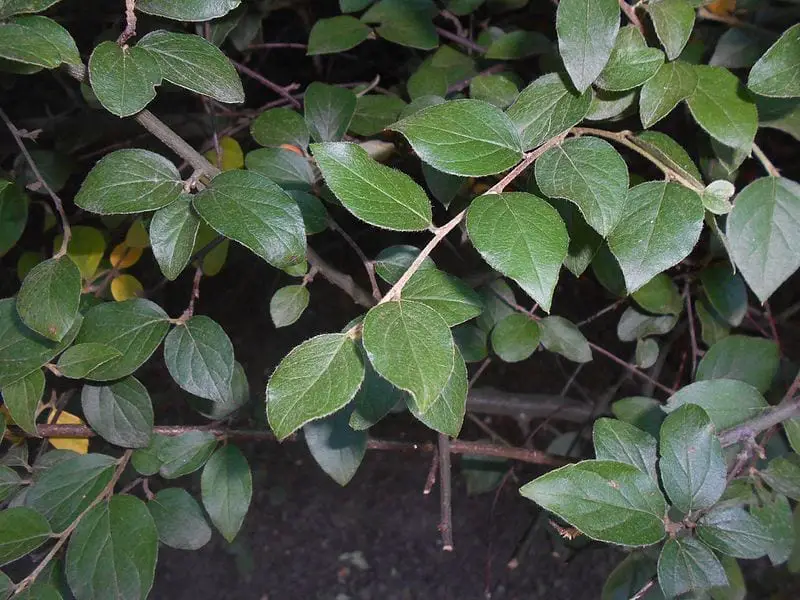
Image – Wikimedia / Salicyna
The Cotoneaster franchetii It is a very interesting shrub that will grow just as well planted in the ground as it does in a pot. Likewise, it will allow us to give it the shape we want, since it resists pruning well.
Are you curious to know what care it needs? Well, don’t hesitate: satiate her by reading this article 🙂.
Origin and characteristics

Our protagonist it is a perennial or semi-perennial shrub (that is, it remains always green or partially loses its leaves depending on how cold an area is in winter) whose scientific name is Cotoneaster franchetii, its common name being cotoneaster. It is native to southwestern China, Burma, and northern Thailand.
Grows to a maximum height of 3 meterswith sharp-oval leaves 2-4cm long by 1-1,5cm wide, with pubescent underside. The flowers are grouped in corymb-shaped inflorescences of 5-15 together, each flower measuring 6-7mm in diameter. These are white in the center and pink on the outside, and are composed of 5 petals. The fruits are red poms of 6-9mm in diameter.
Varieties
Two are known:
- Cotoneaster franchetii lime franchetii: is the one I present to you here.
- Cotoneaster franchetii var cinerascens: it is 4 meters high, and the leaves are 4cm in size. Produces up to 30 flowers per corymb.
What are their cares?

Image – Wikimedia / Father Igor
If you want to have a copy, we recommend that you provide it with the following care:
- Location: outside, in full sun.
- Earth:
- Pot: universal growing substrate mixed with 30% perlite is ideal, but you can mix black peat with arlite in equal parts for example and it would be fine too.
- Garden: grows in deep, fertile soils.
- Irrigation: 3-4 times a week in summer, somewhat less the rest of the year.
- Subscriber: from the beginning of spring to the end of summer (it can be until autumn if the weather is mild or warm) pay once a month with Organic fertilizers.
- Pruning: late winter. Remove dry, diseased or weak branches, and trim those that are growing excessively. It is usually shaped into a ball, but we can always experiment 🙂.
- Rusticity: resists well up to -7ºC.
What did you think of the Cotoneaster franchetii?

